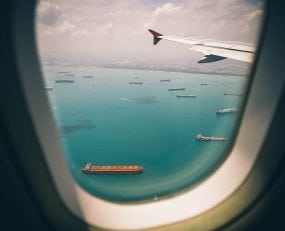
The Gulf States of the Middle East are amongst the most attractive in terms of investment opportunities, evidenced by the findings of the latest Agility Emerging Markets Logistics Index. Three of the top ten markets are located in this region: United Arab Emirates, Saudi Arabia and Qatar and a further three make it into the top 20: Oman, Bahrain and Kuwait.
The third-place ranking of the UAE is due to a combination of its open business environment with a strategy to position the country as a global trade and tourism hub. This has included a network of free trade zones which allows foreign companies to own up to 100% equity, receive a 100% import and export tax exemption, and repatriate 100% of capital and profits. These free zones form a vital component of the local economy and serve as major re-export centres to the Gulf region. For the logistics sector, the most important is the Jebel Ali Free Zone, where more than 300 logistics providers from 30 countries are based, many offering contract logistics and freight forwarding services. The UAE’s logistics market has also benefitted greatly from vast investment in physical infrastructure such as the $3.5bn Al Mafraq-Al Ghuwaifat road upgrade, Expo 2020 and the creation of a 1,200 km rail network combined with expansion of its main air and sea ports. Jebel Ali, which serves as a multi-modal hub and free zone and facilitates domestic, regional and global trade flows, connecting the UAE with 140 ports worldwide, is undergoing expansions to increase handling capacity to 22.1m TEU.
Saudi Arabia’s 6th overall ranking is primarily a result of notable improvement in its business environment, a theme which is common across many Middle Eastern markets. It is a strength that will be key to the Kingdom’s ability to transform its economy under the ambitious Vision 2030 strategy. Announced in 2016, Vision 2030 aims to position Saudi Arabia as an investment powerhouse and a logistics hub connecting three continents. To achieve this, the strategy emphasises economic diversification away from dependence on oil, aiming to grow non-oil revenues tenfold by 2030. The Saudi government has instigated significant expansion of the road and rail networks, as well as the country’s airports in recent years, while also creating free trade and industrial zones, such as the Industrial Valley in King Abdullah Economic City. Saudi Arabia has prioritised development of its sea ports in particular. At a time of low oil prices, Vision 2030 will also create demand for logistics services in other areas of the Saudi economy. The Saudi e-commerce market is estimated to have reached $5.7bn in 2017, as increasing numbers of Saudis gain access to the internet. However, consumer preference for cash on delivery and cyber security remain barriers to growth.
Qatar’s position of 8th overall is driven by high per capita incomes and high urbanisation in particular, which help to create demand for goods and aid efficiency in its domestic parcel market, while its international market benefits from efficient border control systems. However, it is Qatar’s business environment that is a particular strength, with corruption initiatives and an efficient financial sector playing significant roles. Qatar has also dealt well with attempts to isolate it economically and diplomatically. The positive trend is expected to continue, driven by increased oil and gas production, and by infrastructure projects related to the 2022 Football World Cup.
Historically the region has been a crossroads for trade from Europe, Asia and Africa. Whilst some far-sighted governments, such as the UAE, have for many years recognised the opportunity and benefits of developing major regional and global air and sea hubs, others such as Saudi Arabia, are now following suit. This is not just about investing in infrastructure, but by creating frictionless border controls and a business-friendly environment.
Source: Transport Intelligence, April 11, 2019
Author(s): Ti Research Team